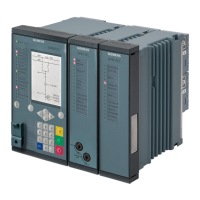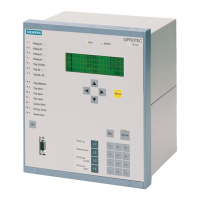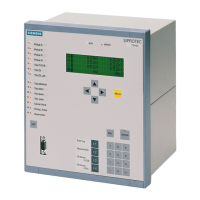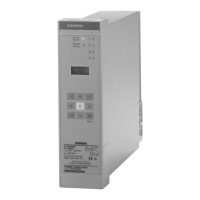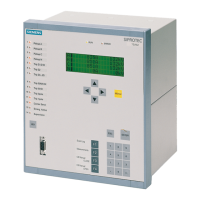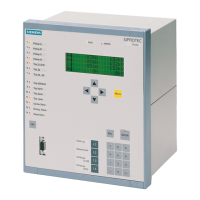Functions
2.43 Trip Circuit Supervision
SIPROTEC, 7UM62, Manual
C53000-G1176-C149-7, Release date 03.2010
296
The state where both binary inputs are not energized („L“) is only present during a short transition phase (trip
relay contact is closed, but the circuit breaker has not yet opened) if the trip circuit is healthy. A continuous state
of this condition is only possible when the trip circuit has been interrupted, a short-circuit exists in the trip circuit,
battery voltage failure occurs, or malfunctions occur with the circuit breaker mechanism. Accordingly it is used
as monitoring criterion.
Table 2-15 Condition Table for Binary Inputs, depending on RTC and CB Position
The conditions of the two binary inputs are checked periodically. A query takes place about every 600 ms. If
three consecutive conditional checks detect an abnormality (after 1.8 s), an annunciation is reported (see the
following figure). The repeated measurements determine the delay of the alarm message and avoid that an
alarm is output during short transition periods. After the fault in the trip circuit is removed, the alarm is reset
automatically after the same time.
Figure 2-137 Logic Diagram of the Trip Circuit Supervision with Two Binary Inputs
Monitoring with Two Binary Inputs (connected to common potential)
If two binary inputs connected to common potential are used, they are connected according to the figure below,
with common connection L+ or once in parallel to the corresponding protection command relay contact and to
the CB auxiliary contact 1.
No. Trip contact Circuit breaker Aux 1 Aux 2 BI 1 BI 2
1 Open TRIP Closed Open H L
2 Open CLOSE Open Closed H H
3 Closed TRIP Closed Open L L
4 Closed CLOSE Open Closed L H
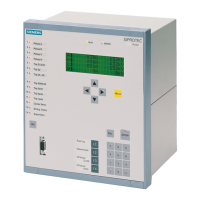
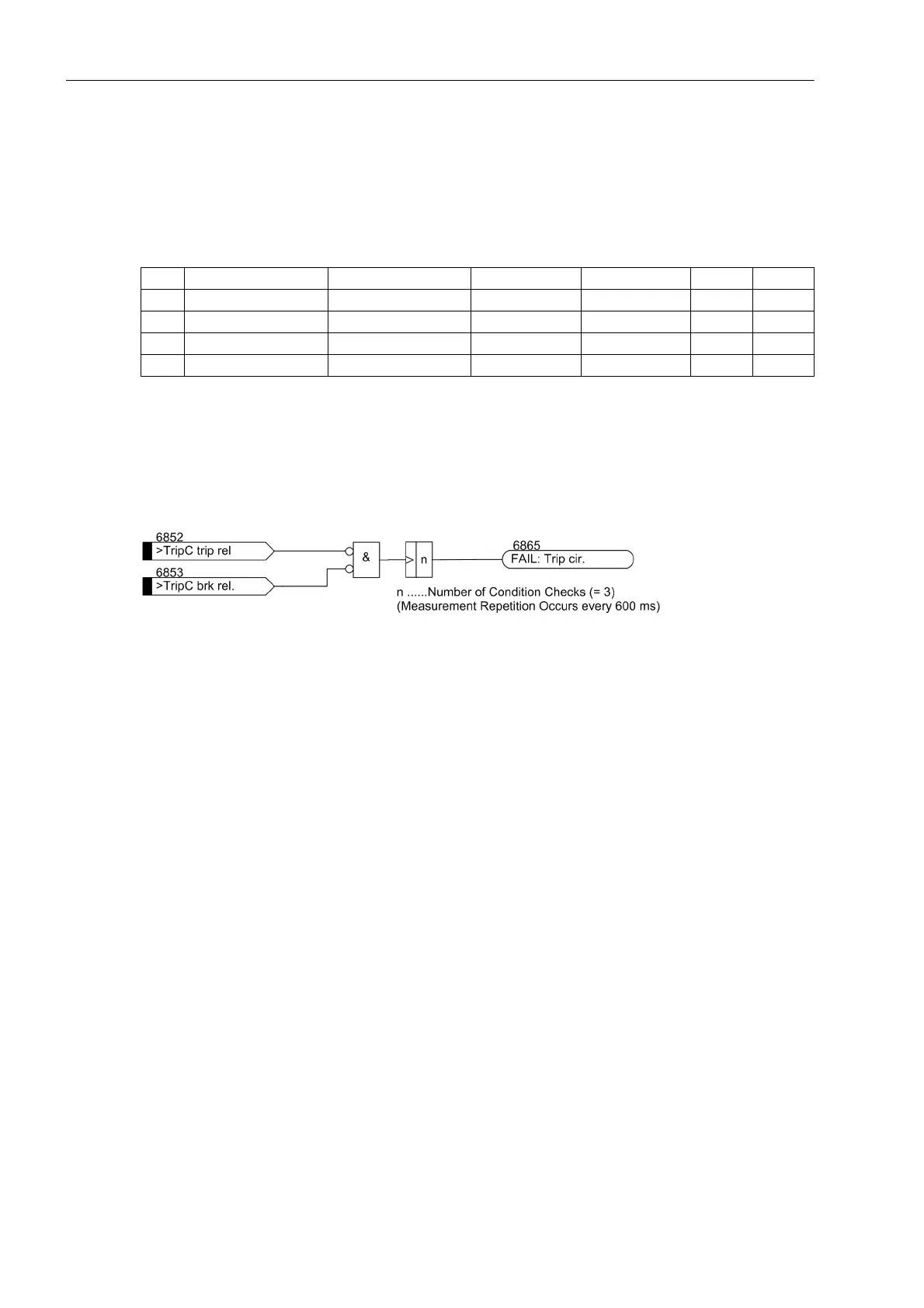